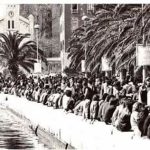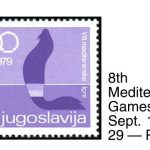A look at the history of the Ambasador hotel.
The Ambasador hotel found its place in the spotlight over the last few weeks with the news of its demolition and reconstruction. The hotel, which was bought by Birkenstock heir Klaus Alex Birkenstock last year, should see a highly anticipated reopening next summer.
The new boutique hotel will have just over 100 accommodation units, a third-floor swimming pool, nightclub, a restaurant with 240 capacity inside and a terrace, a meeting room, spa, gym, and parking garage.
On October 3, 2017, just as it was announced, the demolition of what remained of the Ambasador hotel began. The demolition process, which should take about a month and a half, will be followed by a four and a half month excavation and fourteen months of construction for the new boutique hotel.
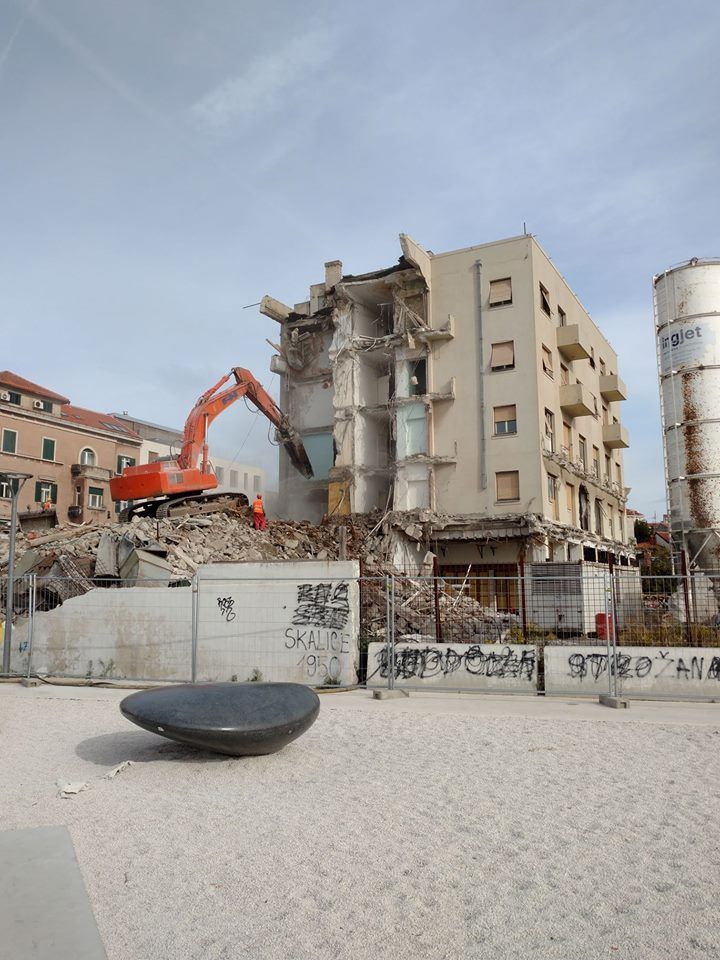
Terry Ruebush
While there are mixed feelings about the project, today we thought we’d help you learn a bit about the Ambasador from its very beginnings.
Here’s a look at the history of the Ambasador hotel.
In 1890, a slaughterhouse initially took over the future site of the Ambasador hotel. In front of the slaughterhouse building, there were individual stalls for cattle, pigs, small beasts and horses. There was also an apartment for the manager and another for the guard.
The slaughterhouse was designed according to health and scientific requirements, and there was even an observatory for animal inspection. The construction was carried out by entrepreneurs Sitić and Ganza.
The old slaughterhouse worked until 1899 and was demolished just before the construction of the “Ambassador” hotel in 1935 (Source: Split kroz povijest)
The works of architects Vojin Simeonović, Helena Baldasar and Emil Ciciliania were rewarded at the architectural contest for the Ambassador Hotel in 1933. Architect Josip Kodl had the task of consolidating these works in 1937 to create the new project. The first stage of the hotel was built with just 48 rooms.
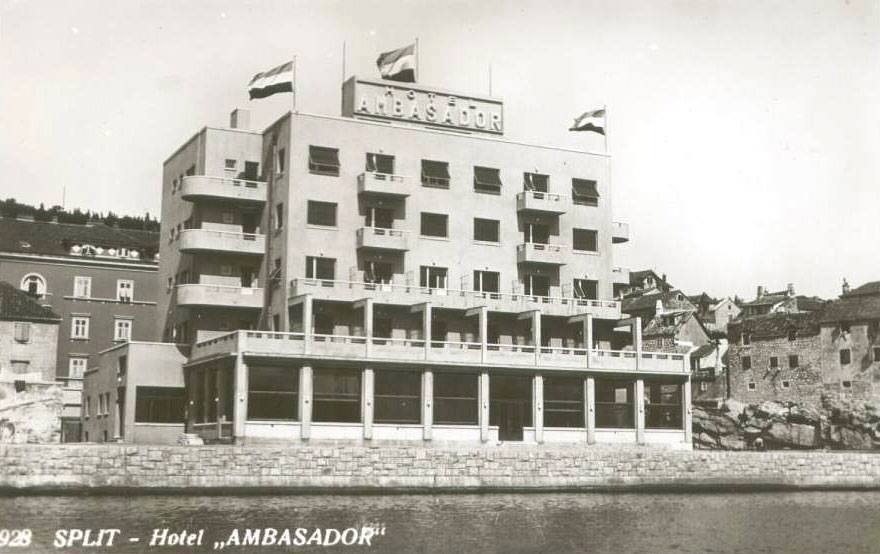
Ambasador in 1937 via Split kroz povijest
The accommodation facility was organized in a simple cube located in the fabulous location of the city harbor on the West Riva with a view towards the historic center of Split. Following Kodul’s reductivist architectural vocabulary, the design was restrained, the openings even, and the only accents shown were on the side balconies with round ends.
The construction of such a contemporary hotel building was a reflection of the desire to make Split a more attractive European tourist destination.
After the war, the hotel experienced many alterations and renovations, as well as the improvement of the pavilion in the southern part of the parcel, but remained a valuable artifact of modernist architecture and an essential factor of the city. Works were carried out by Vladimir Šore. (Source: Split kroz povijest)
A timeline courtesy of Slobodna Dalmacija:
In 1938, the cafe and restaurant opened at the hotel.
In 1945, the four-story building with 52 rooms went under military rule and became the home of the JNA.
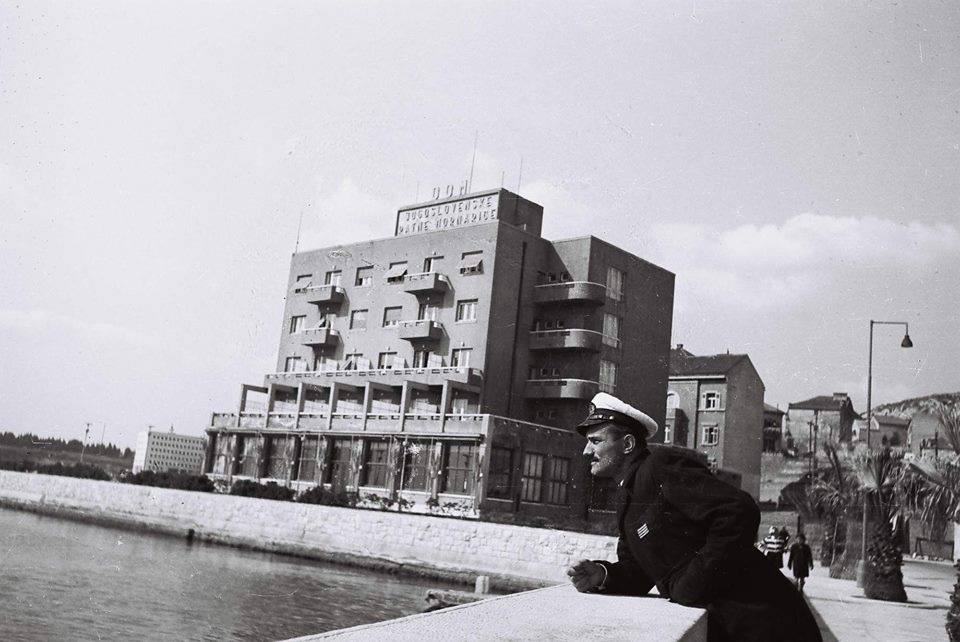
Ambasador in 1947 via Split kroz povijest
In 1952, on the south side of the main building, a new wing was built where the cinema hall opened (cinema “Jadran”).
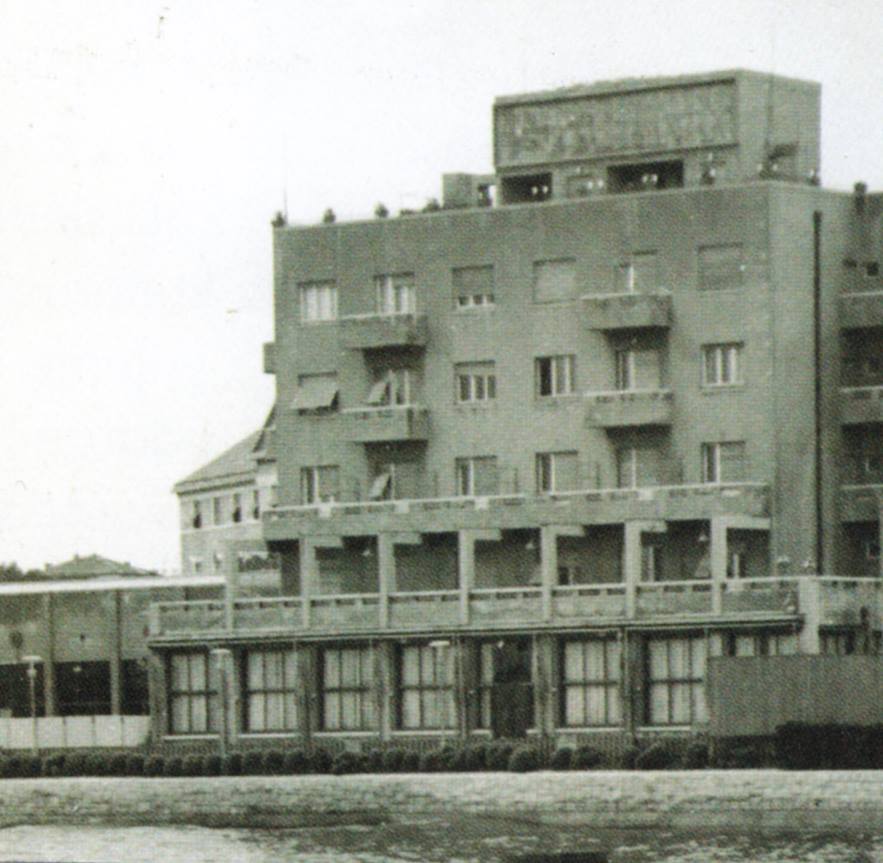
1954 via Split kroz povijest
In 1962, a thorough reconstruction of the façade and interior of the former hotel was carried out. A yard with catering content and a dance floor was also arranged.
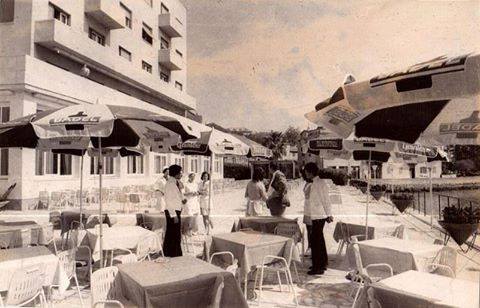
Restaurant in 1960s via Split kroz povijest
In 1997, famous football coach Tomislav Ivić purchased the hotel from the city with the dream of returning the hotel to its original purpose.
In 2016, heir to Birkenstock shoe brand Klaus Alex Birkenstock bought the building from Ivić.
In October 2017, work on the new hotel finally began.
Translation and photos courtesy of Split kroz povijest and Slobodna Dalmacija


